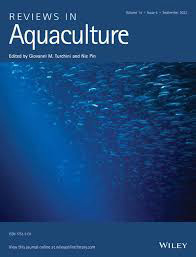High Levels of Vitamin A in Plant-Based Diets for Gilthead Seabream (Sparus aurata) Juveniles, Effects on Growth, Skeletal Anomalies, Bone Molecular Markers, and Histological Morphology

Abstract
Substitution of fish-based ingredients may alter the nutritional profile of the feeds, including the vitamin contents, ultimately leading to unbalanced vitamin supply. Vitamin A plays an essential role in epithelium preservation, cell differentiation, reproduction, and vision. It also intervenes in skeletogenesis through chondrocytes development. Therefore, low levels of vitamin A may cause poor growth and abnormal bone development among other symptoms. Besides, in gilthead seabream excess vitamin A altered bone structure and homeostasis, indicating that an upper level for vitamin A in feeds for this species must be defined. For this purpose, a practical plant-based diet (FM 10% and FO 6%) containing five increasing levels of vitamin A (24,000, 26,000, 27,000, 31,000, and 37,000 IU/kg) supplemented as retinyl acetate was formulated to identify the effects of high levels of vitamin A for gilthead seabream juveniles. The trial was conducted with 450 total fish distributed into 15 tanks, where each diet was tested in triplicates for 70 days. At the end of the trial, samples were taken for analyses of vitamin A—relevant markers. At the end of the trial the high levels of vitamin A supplementation did not cause a reduction in growth, whereas no significant effect was observed for the feed efficiency, specific growth rate, and feed convertion ratio. Although not significant, retinol content in liver showed a tendency to increase with the elevation of dietary vitamin A levels. Although minor, the highest level of vitamin A dietary content (37,000 IU/kg) caused a significant increase in caudal vertebrae partial fusion as well as caudal vertebrae malformations. Increasing dietary vitamin A was related to a reduction in the occurrence of microhemorrhages in the liver and a reduction in the presence of eosinophils associated to the pancreas. Overall, the results of the present study suggested that gilthead seabream juveniles fed a plant-based diet are able to tolerate very high levels of vitamin A supplementation when supplemented as retinyl acetate. Nevertheless, further supplementation should be avoided in order to reduce the prevalence of anomalies affecting the caudal vertebrae.

